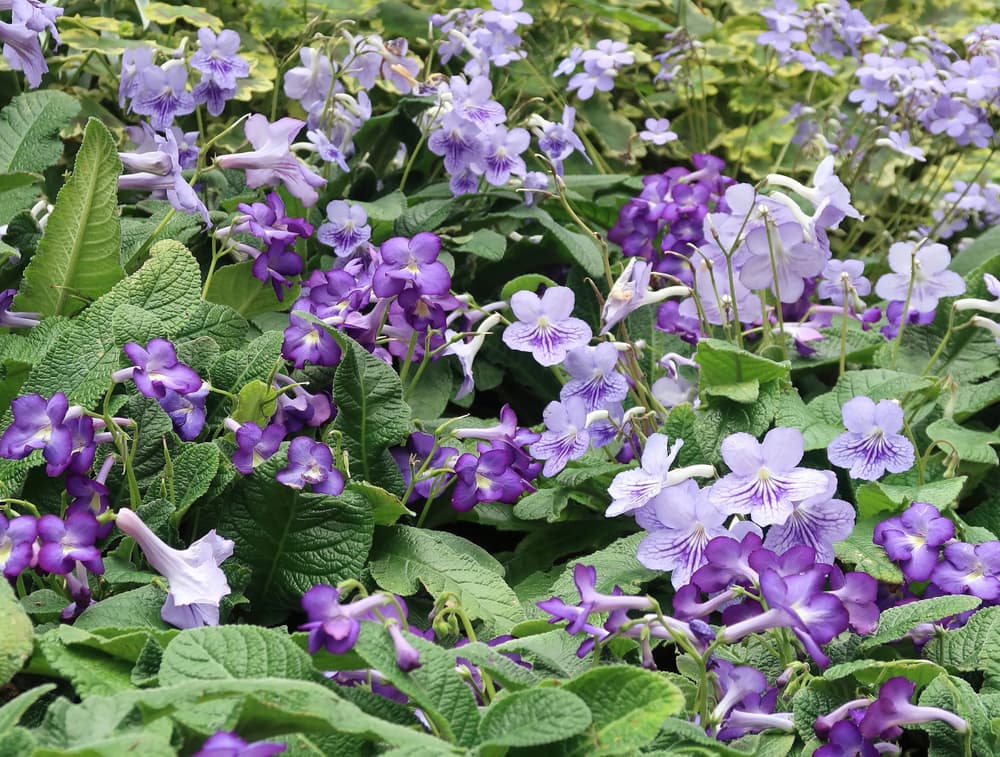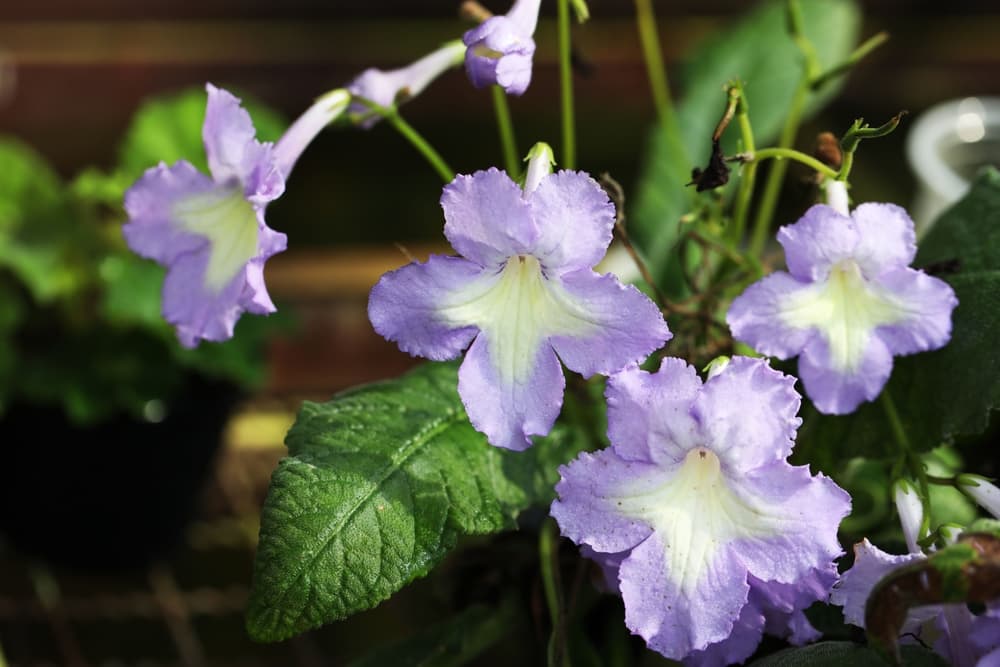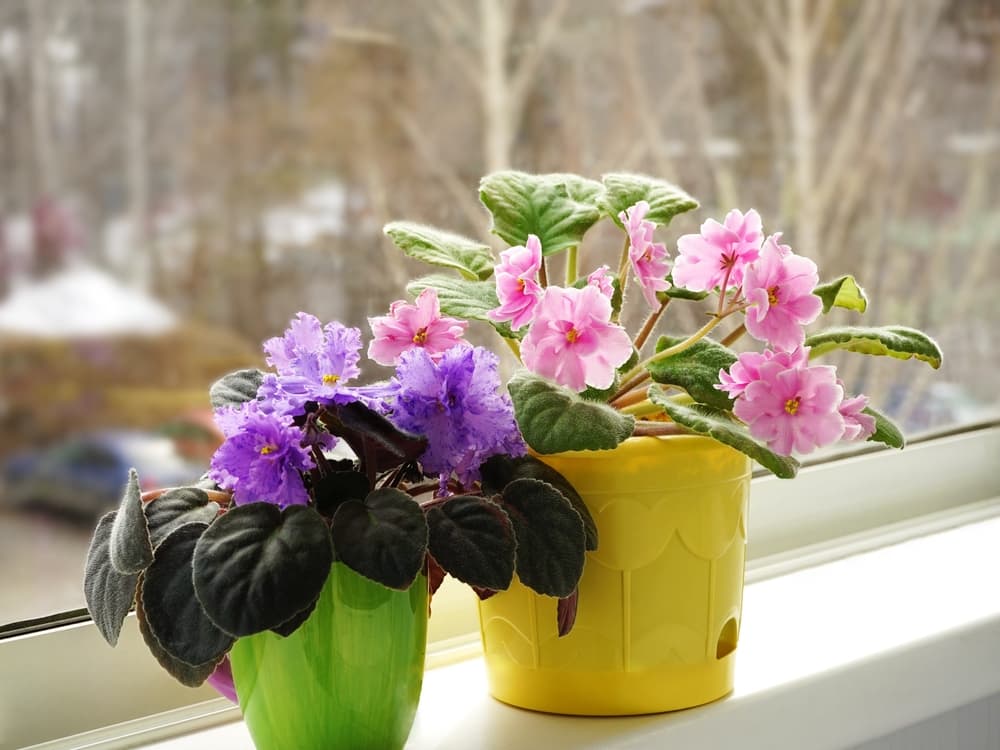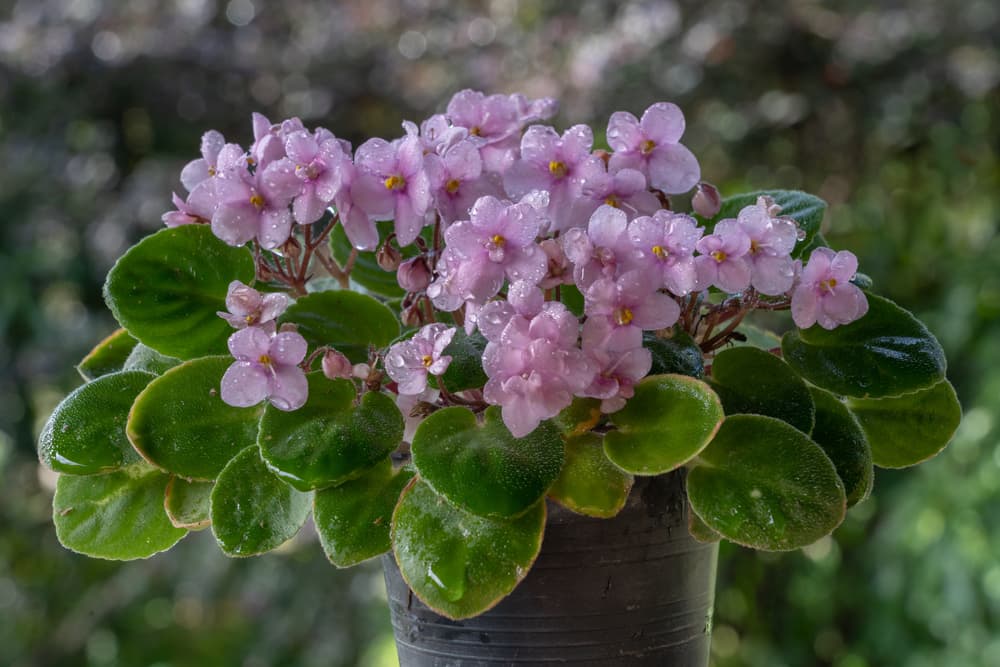HOUSEPLANTS > STREPTOCARPUS
Reviewed By COLIN SKELLY

Colin is a Horticulturist and Horticultural Consultant with experience in a range of practical and managerial roles across heritage, commercial and public horticulture. He holds the Royal Horticultural Society’s Master of Horticulture award and has a particular interest in horticultural ecology and naturalistic planting for habitat and climate resilience.
Contributions From JANE PERRONE

Jane Perrone is a Journalist turned Houseplant Expert who has over 25 years of experience. Jane published a book on Houseplants at the start of 2023 and is the founder of On The Ledge podcast, with more than 250 episodes to date. She is a member of the RHS Advisory Committee on Houseplants.

After working at Thompson & Morgan for 18 years, Michael Perry began his online brand ‘Mr Plant Geek’. He now runs his own podcast and has appeared on several TV shows in the UK, including This Morning, The One Show and Steph’s Packed Lunch. Michael was listed in the '20 Most Influential Horticulturists’ by The Sunday Times in 2015.
IN THIS GUIDE
STREPTOCARPUS GUIDES
Streptocarpuses or ‘Cape Primroses’ are the dream houseplants.
Compact and easy care, these tender evergreens are made to order for climatic conditions found in homes in European regions.
Their foliage comprises attractive rosettes of rich green leaves snd they produce masses of small flowers for six months to a year!
Not only are their colours wonderfully varied, many are effectively bi-coloured.
“I would always recommend Streptocarpus because it flowers almost all year round, providing an extra dimension of joy in the home,” shares Garden Blogger Michael Perry.
Overview
| Botanical Name | Streptocarpus |
| Common Name(s) | Cape Primrose |
| Plant Type | Houseplant |
| Native Area | Africa |
| Hardiness Rating | H1C |
| Foliage | Evergreen |
| Flowers | Many colours – often white/violet |
| When To Sow (Indoors) | Year-round |
| Flowering Months | March, April, May, June, July, August, September, October |
Sunlight
Preferred
Partial Shade
Exposure
Indoors
Size
Height
0.1 – 0.5M
Spread
0.1 – 0.5M
Bloom Time
March – October
Soil
Preferred
Chalk, clay, sand
Moisture
Moist but well-drained
pH
Slightly Acidic / Neutral
Cape Primrose is a tender – make that ‘very tender’ – evergreen.
Though this plant is intolerant of cold and also succumbs to its fair share of pests, it has a singular strength: this delightful wildflower is a regular homebody!
Cape Primroses are nature-made houseplants for European and American climates, and what’s more, they are flowering houseplants that produce eye-popping little blooms for from six months to nearly the whole year.

Their flowers are soft and soothing, and also dazzling and intense.
“I really love the Gesneriad family which includes things like Primulinas, Streptocarpus and Aeschynanthus,” shares Jane Perrone, a Houseplant Expert.
“If I was going to choose a favourite plant family, it would be that one.”
As, Jane says, the Streptocarpus genus falls in the Gesneriad family comprising numerous genera that are relatively little-known but include many types of plants, the vast majority of which bear unusual and attractive flowers.
Streptocarpus includes upwards of 150 species that are native (only) to the African continent from Guinea and Sierra Leone on the west coast across to Sudan down to South Africa, plus Madagascar.1Streptocarpus (African Violet, Cape Primrose). (n.d.). North Carolina Extension Gardener Plant Toolbox. Retrieved March 24, 2023, from https://plants.ces.ncsu.edu/plants/streptocarpus/
The names Streptocarpus and Cape Primrose are often used synonymously, though not by botanists.

Cape Primroses are, as expressed earlier, nature-made houseplants for European and American climates (excluding the northern regions of the countries) because the climatic conditions in the average home are quite similar to those of their native habitats.
With only some effort conditions inside the house can even be made to mimic those native-region climates.
Another positive attribute is that they are compact plants that are ideal for sunny windowsills.
Streptocarpus houseplants can transform any room, bringing a little bit of garden into the home.
Habitat & Growing Conditions
In their native habitats, Streptocarpus species often grow at the edge of and in forests, and also under the forest canopy where they thrive in shade in humid conditions.
Other species also grow amidst rocks and on rocky overhangs and outcrops, but even on such ground they are usually found in the shelter and shade of trees and woods.

Cape Primrose varieties will flourish when they get warm days and cool nights yet these plants are very sensitive to temperature extremes and cannot tolerate temperatures either around even 5°C or nearing 26°C.
At a hardiness rating of H1C they are frost tender yet cannot be kept outdoors in even part sun in the summer as they are also ‘sun tender’!2Streptocarpus glandulosissimus. (n.d.). Royal Horticultural Society. Retrieved March 24, 2023, from https://www.rhs.org.uk/plants/17816/cape-primrose/details
Normal conditions in most homes in a spot where they can get indirect light or only early morning direct sunlight suits these plants just about perfectly.
They are more amenable to a somewhat humid environment than to a dry one.
Planting
It is very difficult to plant Streps outdoors because in the small band of land along the south-western and southern coast of England where the winter temperatures won’t kill these plants, the summer sun and heat will.
If you are located in these very mild regions and you want to try to grow these plants outdoors, what you can do is to site them in near-full shade, especially in summer when they should get no more than dappled or filtered morning sun.

Even out of summer they should not get full sun.
In general, if you would like to have Cape Primrose sitting outdoors then simply grow them in containers that you can put outdoors according to your region’s climate and the season, and bring them indoors as and when necessary.
The best plan is to grow these pretty little flowering varieties as houseplants following the guidance in the following section.

That said, they are ideally suited to windowsills except south-facing ones that get direct sun in the warmer months.
Plant Care
Soil Requirements
To grow Cape Primrose varieties as houseplants use a soil consisting of potting mix and garden compost with gravel or perlite or both mixed in to facilitate drainage.
These plants require excellent drainage so also make sure that the container or pot has drainage holes.
Soil pH from moderately acidic to slightly alkaline will do though optimally it should be from slightly acidic to neutral – pH 6.1 to 7.3.
Temperature & Aspect
These temperature-sensitive plants will do best at daytime temperatures hovering around 21°C and nighttime ones of around 15°C.

Plants should get several hours of indirect daylight – they may get direct early morning sun out of summer.
A north- or east-facing windowsill would be a very good location.
They can be put on a south-facing windowsill during winter.
You can filter sunlight by shielding Streps with a thin or gauzy curtain.
Growing From Seed
Cape Primroses can be grown from seed or propagated from leaf cuttings.
They are easy to find as potted plants or bare-root plugs.
Seeds are very small – sow them in spring or summer by simply scattering them on top of the soil, either in a seed tray or pot.

They need light to germinate so do not cover them with soil.
Instead, consider covering the tray or pot with clear plastic cling film.
This will lock in moisture that is helpful for germination and early growth – water well.
The tray or pot should be kept in indirect but bright daylight and in a temperature range of 19-23°C.
Continue to water such that the soil stays moist. Seeds should germinate within a fortnight.
Slow-growing initially, plants grown from seed will start to flower inside five months.
After seedlings have two true leaves they can be potted into individual pots, which should be of a small size. At this time reduce the amount of watering.

Watering
Water regularly but in moderation to avoid root rot.
You may water just when the soil dries out – this precaution is especially necessary during the winter months.
As temperature-sensitive as these plants are, one needs to be careful about the water temperature as well.
During winter do not water plants directly after filling a watering can from the tap as the water will be quite cold – fill water in the can or in some container a day in advance so that the plants can be watered with water at room temperature.

This precaution is critical if you live in one of the colder regions of the country.
Similarly, if you are experiencing hot weather, be sure that the water you collect from the tap is not even lukewarm.
Feeding
Although Cape Primroses greatly benefit from regular feeding, do not feed a young plant as it does not have a well-developed root system.
Wait until plants are six months or more before you feed for the first time.
In spring and summer, you may feed the plants about every three weeks with a houseplant liquid fertiliser.

It should be diluted to double the specified strength (that is, at a greater dilution).
You may continue feeding at a greater dilution and reduced frequency through autumn and winter.
Finally, as Cape Primroses mature, they grow horizontally forming new clumps.
Any time during spring you can divide an overgrown plant by simply separating clumps (vertically), and re-potting them.
Propagation
Propagating Streps from leaves is, well, fun and easy.
Actually, this particular ‘feature’ offers an interesting and enjoyable way to introduce children to gardening.
Cut off a young and healthy leaf that has attained its full size just at the petiole.
Then cut it crosswise into four sections or lengthwise on each side of the midrib into two.

Insert the cuttings with the cut side down to about 2 centimetres into the type of soil described above.
Water well, and – as for seeds – cover the tray or pot with clear plastic film.
The cuttings should be kept in the same temperature range as stated above as you continue watering such that the soil stays moist.
In four to five weeks small new plants or plantlets will form from the cut ends of the cuttings.
There will be several to many such plantlets – after they develop two sets of leaves they will need to be divided and potted on.
“Growing Streptocarpus from leaf sections is a great propagation method to try if you’re a beginner or for children,” shares Colin Skelly, a Master Horticulturist.
“They normally take easily and the plantlets form fairly quickly, providing encouragement to try other plants and methods.”
Common Problems
Streps are sensitive plants and may suffer from foliage problems, in particular leaf rot and leaf scorch.
Leaves may start to rot from the lower ends because of excessive watering, wrong type of soil, poor drainage, or any combination of these factors.
If you encounter leaf rot, remove rotting leaves from the petiole and correct whatever is wrong.

Leaves may get scorched and browned from too much direct sunlight, in which case simply change the position of the plant.
Though some varieties are a little more robust than others, all varieties can succumb to thrips, mealybugs, vine weevil, glasshouse leafhoppers, and tarsonemid mite.
All these pests can be controlled but the best course of action is to regularly carefully inspect each plant, particularly during spring and summer, so that any infestation can be spotted early and dealt with before it spreads and becomes hard to control.
Buying Streptocarpus
Cape Primroses, already popular to begin with, are rising in the popularity sweepstakes.
As a consequence they are so widely available that you should be able to find several varieties at your local garden centre or nursery.

Almost every online plant and shrub merchant carries a good assortment of Streptocarpus varieties as potted plants or bare-root plugs.
And if a friend or neighbour has a plant, just ‘borrow’ a leaf!
References
- 1Streptocarpus (African Violet, Cape Primrose). (n.d.). North Carolina Extension Gardener Plant Toolbox. Retrieved March 24, 2023, from https://plants.ces.ncsu.edu/plants/streptocarpus/
- 2Streptocarpus glandulosissimus. (n.d.). Royal Horticultural Society. Retrieved March 24, 2023, from https://www.rhs.org.uk/plants/17816/cape-primrose/details


